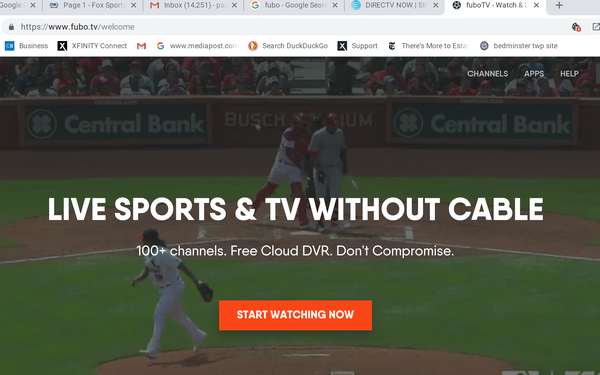
Getting consumers to try live TV streaming
services (like Hulu with Live TV, Sling, DirecTV Now and YouTube TV) isn’t easy. All of them offer their service free before the meter starts. That gives viewers a chance to get familiar
with watching familiar TV in an unfamiliar way, usually for a cost-free week.
The week-long time frame makes some people think: This would be a good time to try out a live TV streaming
service. The World Series begins tonight on Fox — and with an experimental subscription, a viewer could see five of the possible seven games for free. After that the resourceful customer would
have to find a new way to see the remaining games..
One way would be to test a second one of the live TV streamers. Sling, for one, is “reminding” consumers this is the perfect
time to try it out.
That’s what they’re betting on, says Michael Greeson, president of The Diffusion Group research company: “You’ll drop in for a game or a season and
get hooked on the service.”
The companies expect a high churn rate, but, says Greeson, “at minimum the operator walks away with a new service prospect, and at least seven days of
data on their viewing behavior on which they can customize new offers and messaging.”
Freed from cable and satellite contracts, though, consumers seem to enjoy coming and going at will.
Using data from Q1 of 2018, Greeson says about half of active subscribers have used and canceled other services: 27% canceled Hulu with Live TV after the free trial, 36% got rid of YouTube TV,
21% voided Sling, 14% discontinued DirecTV Now, 13% zapped Playstation Vue, and 29% gave sports-tilted Fubo TV the boot.
Still, that means quite a few stayed, at least for a while.
Getting customers to stick around is another matter. Lots of people sign up for such so-called virtual pay TV services for narrow and specific reasons. Greeson presents another survey that says
almost a quarter of them indicated they may quit in the next six months. And 66% of those people who said they’d be leaving are doing so because, “I subscribed just to watch a certain TV
series or sports league, after which I won’t need the service.”
Meanwhile, according to new data from TDG, people who have Roku streaming devices are most likely not to have a
“legacy pay TV” service like cable or satellite.The data says 30% of Roku’s users cut the cable cord, higher by a few percentage points than others like Amazon or Apple.
“For many TV streamers, buying a Roku, and getting access to the Roku video ecosystem, is no longer just an easy way to supplement their legacy pay-TV service, but a means of replacing
it," Greeson says.